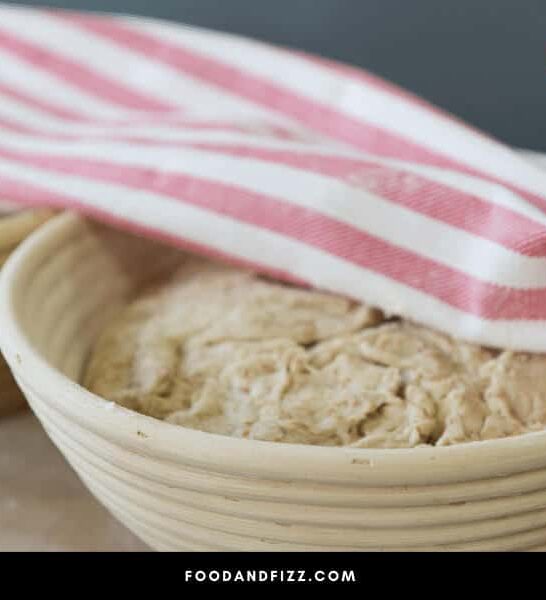Whether you’ve recently joined the ranks of pandemic bread makers or have long been a baking up the occasional loaf, you might have wondered how to cover your dough while its rising.
That magical but maddening stage of the process needs the right environment to avoid drying out the dough or forming an unpleasant “skin” on one side. Read on to find out why dough should stay moist and which covers work best.
What Should I Cover Bread Dough With While It’s Rising?
You should cover bread dough with a plastic wrap while it is rising. A damp towel is traditional, it can dry out during long rises. Plastic wrap holds in moisture the best, but as an expensive, single-use item that’s bad for the environment, it’s not a great solution. Try a reusable container and “lid” combo, like a Tupperware, a Dutch Oven, a Slow Cooker, or even a shower cap stretched over a bowl!
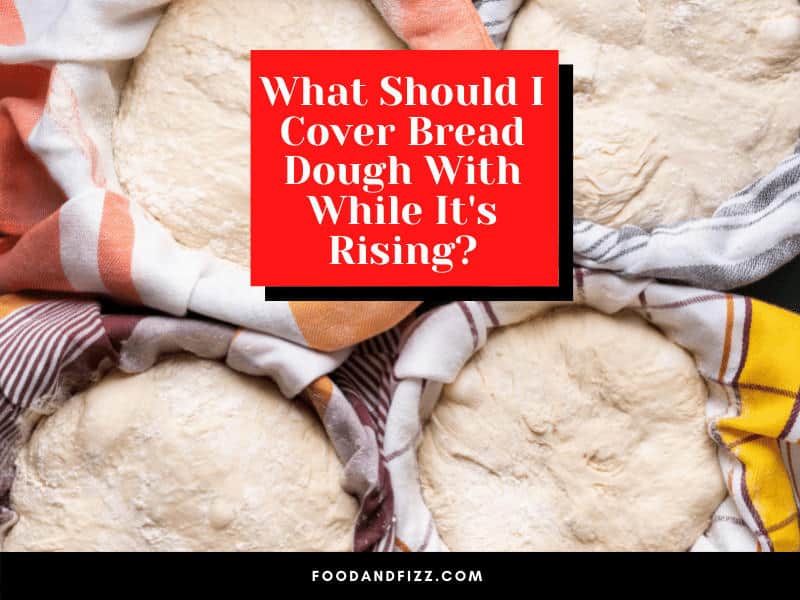
Why Dough Needs to Stay Moist While it Rises
Dough that stays wet will bake up light, airy, and full of holes—the “alveolar structure” or “open crumb” that artisan bakers aim for.
Dried out dough will produce bread that is crustier and denser. In fact, the special fermentation rooms used by bakeries maintain a humidity level of at least 75 percent, and proofers maintain 80 percent humidity to ensure the dough stays moist.
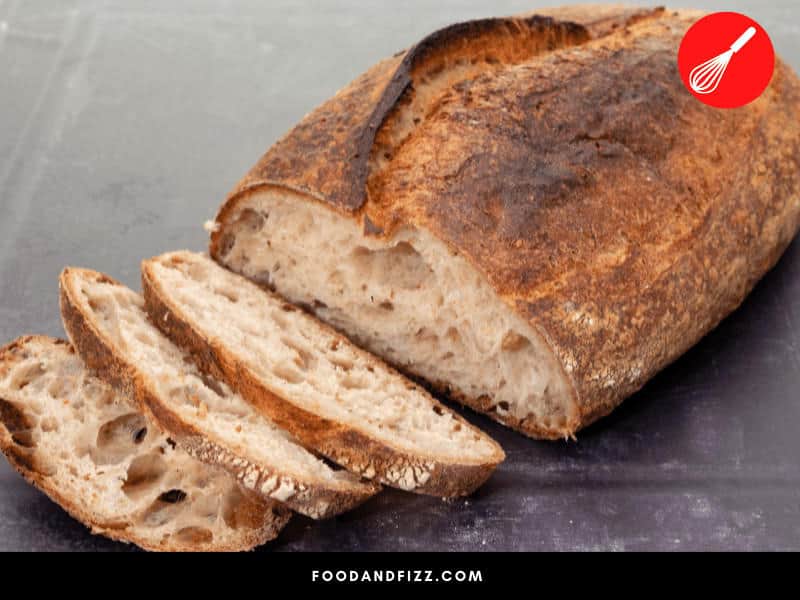
Wet dough is also more pliable, so it’s easier for the dough to rise when it’s damp. That dampness pays off in the oven where wet dough springs up well, especially around the cuts a baker makes at the top to allow steam to escape. Those cuts become the “ears” you see on sourdough loaves or other artisanal breads.
Of course, not all breads need (knead?) the consistency of ciabatta—there are plenty that should be dry and crispy. The key isn’t the presence of moisture, but rather how to control the level of it.
To control the hydration level, home baking recipes often call for bakers to cover a loaf while it rises. These rises (and there may be more than one) can sometimes take hours.
What Kind of Cover to Use While Dough Rises
If you don’t have a fermentation room or a proofer with a hydrational level control (and let’s face it, most of us don’t), you can still maintain the moisture of your dough with a few readily available home remedies.
The Traditional Towel
In the old days, home bread baking recipes called for a baker to cover the loaf with a damp dish towel. This strategy still works fine, but a towel (especially a wet one) can fall down and get sticky.
On the other hand, a towel can also dry out over time, leaving the dough susceptible to drying, as well.
That’s a (Plastic) Wrap
Plastic wrap is light and won’t stick to the dough (especially if you spray it with oil beforehand). It won’t dry out and holds moisture in well by creating a seal around a bowl or a loaf pan.
But folks who care about using less plastic won’t cling to this solution. And it’s also an expensive one, since plastic wrap (especially oily plastic wrap) can’t typically be reused.
Shower Dough?
Some inventive home bakers have suggested using a plastic shower cap to cover a bowl or rising bread dough.
The elastic helps it to stretch and cling tightly, and it’s reusable if it doesn’t touch the dough (or if you don’t mind washing it). Just don’t mix up your shower caps or your loaf might end up smelling like shampoo!
The Bread Basket
Even if you don’t have a fancy proofing drawer, you may have some kitchen containers that can serve double duty as storage spaces that will hold in the moisture of your rising dough.
For example, a slow cooker or a large Dutch oven can accommodate even a larger loaf as it rises. Some recipes even call for baking right inside these containers once the dough has risen.
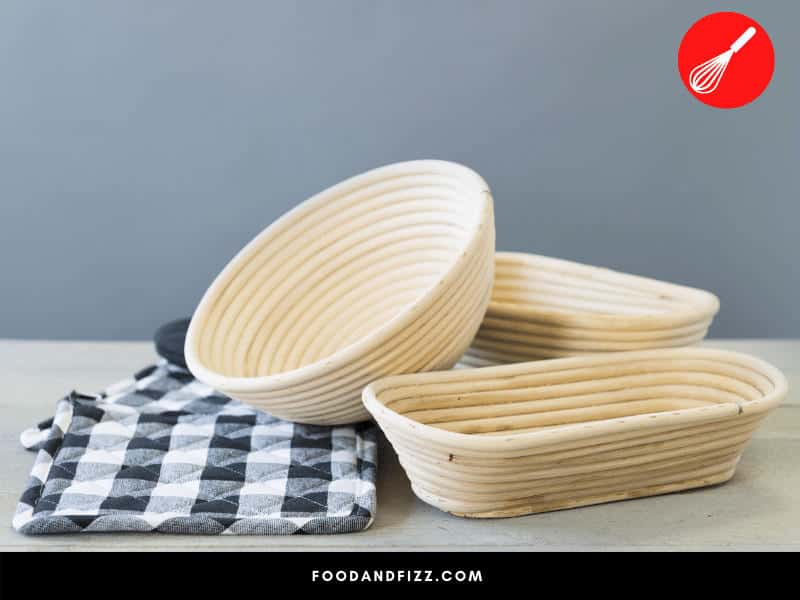
Where? Tupperware.
Today’s plastic storage containers come in all shapes and sizes, from tiny pots to huge tubs. If you choose to let your dough rise inside a Tupperware container, just remember to crack a corner or open a vent to allow the yeasty gases to escape.
What a Dish!
Perhaps the cheapest and easiest method (because most available to anyone), is to put a plate across the top of a mixing bowl. While it might be a bit of a balancing act, the plate works fine as a lid to keep the moisture in and can go straight into the dishwasher afterwards.
Some Covers Seem to Let More Air In and Out—Is that Important?
Only insofar as it affects the yeast. Contrary to popular belief, yeast does not need oxygen to make bread rise. Yeast can feed on the sugars in the flour aerobically (with oxygen) or anaerobically (without oxygen).
This difference may, however, change the taste of the bread depending on the type you’re making. Aerobic respiration produces carbon dioxide and water, whereas anaerobic respiration, or fermentation, produces carbon dioxide and alcohol.
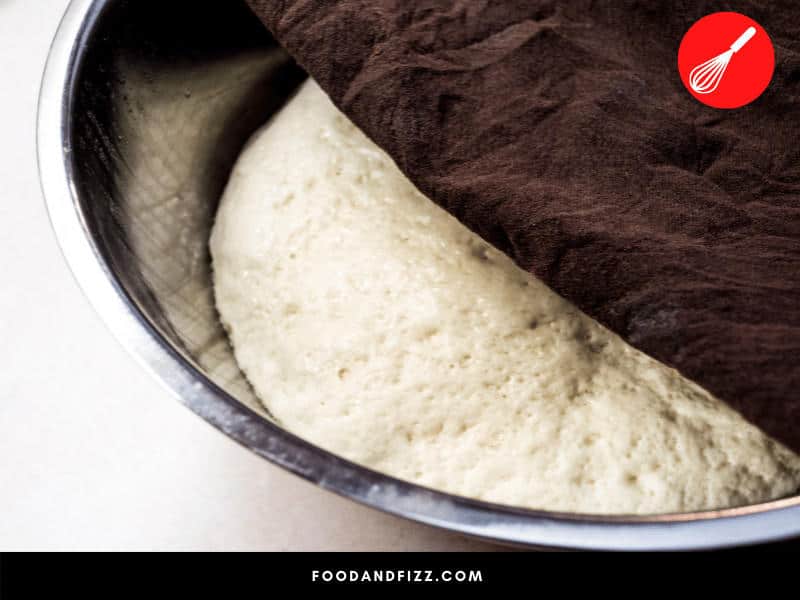
Can I Put the Covered Dough in the Fridge or the Oven?
Some bakers like to put the covered dough in the oven with the light on to maintain a consistent and controlled temperature, as the other parts of the kitchen can often change according to season. Just make sure not to accidentally turn on the heat!
Don’t put the covered dough in the fridge unless you want to slow down the rise. Yeast speed up their work with warmth and slow it down with cold. Of course, some bakers use this to time the rising, or even freeze a loaf after the first rising for easy baking later on.

Which of These Coverings Makes the Best Bread?
The answer to that question depends on the type of bread and on how discerning your audience is.
I’ve baked loaves using each of these kinds of covers while the dough was rising and didn’t notice much difference in the final product. But the judges on Bake Off might disagree….
Conclusion to What Should I Cover Bread Dough With While It’s Rising?
There are all kinds of coverings you can use while your dough is rising, from the traditional damp towel to a Tupperware container or even a shower cap over the bowl.
Whatever the method, the key is to maintain the level of moisture required by the recipe so the bread bakes up with the right balance of airy and crispy.
Frequently Asked Questions on What Should I Cover Bread Dough With While It’s Rising?
Why do you cover dough when rising?
Dough that stays wet will bake up light, airy, and full of holes—the “alveolar structure” or “open crumb” that artisan bakers aim for. Dried out dough will produce bread that is crustier and denser.
What do I do if my bread dough dries out?
If your dough does develop a dry “skin,” you might still be able to add water and knead the dry spots back into the dough. But if the whole dough ball gets dry, you’d best start over.

